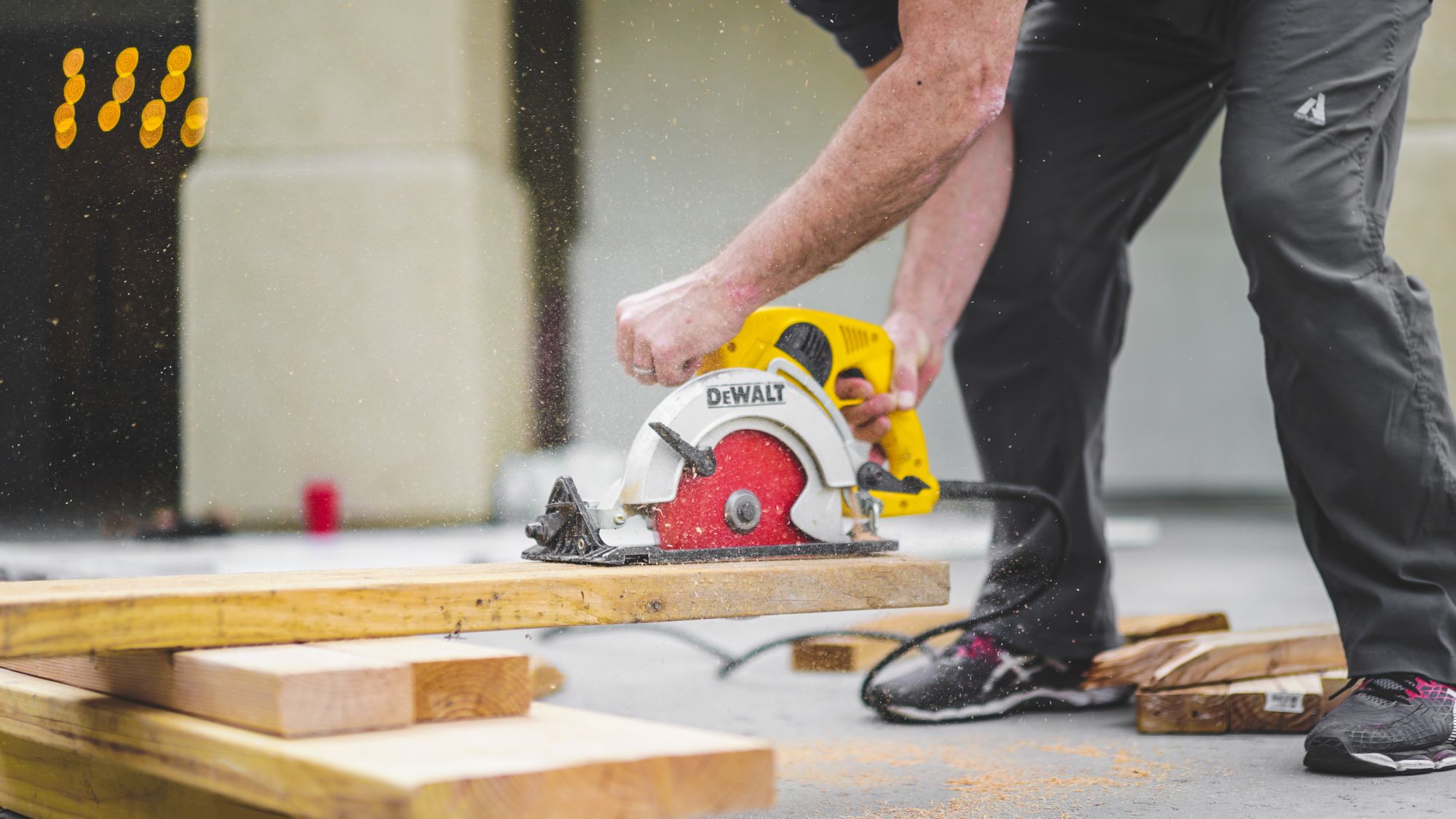Have you ever stopped to think about the origins of the wood products surrounding you daily? From furniture to paper, the wood manufacturing industry is vital to our economy and daily lives.
However, the wood manufacturing industry also faces its fair share of challenges. As demand for wood products continues to increase, the industry must grapple with issues such as sustainability, supply chain disruptions, and changing consumer preferences. Additionally, the COVID-19 pandemic has presented new challenges, such as supply chain disruptions and labor shortages.
Despite these challenges, the wood manufacturing industry has opportunities for growth and innovation. New technologies and production methods are emerging, allowing for more sustainable and efficient wood production. Furthermore, the increasing demand for sustainable wood products presents an opportunity for businesses to differentiate themselves in a crowded market.

In this article, we'll explore the opportunities and challenges facing the wood manufacturing industry in the United States.
The wood manufacturing industry is crucial in our economy and daily lives. As consumers become increasingly conscious of the impact of their purchasing decisions on the environment, businesses in the industry must adapt to meet changing demands. By embracing sustainability and innovation, wood manufacturing businesses can thrive in a rapidly evolving market.
So, let's dive into the world of wood manufacturing and explore the challenges and opportunities facing the industry in the United States.
Here's what we shall cover in this post:
- Introduction: The Wood Manufacturing Industry
- Challenges Facing the Wood Manufacturing Industry
- Competition from Imported Wood Products
- Adoption of Advanced Manufacturing Technologies in the Wood Industry
- Strategies for Overcoming Challenges in the Wood Manufacturing Industry
- How Deskera Can Assist You?
- Conclusion
- Key Takeaways
Introduction: The Wood Manufacturing Industry
The wood manufacturing industry is a vital sector that produces a wide range of wood products for various purposes. It involves processing raw wood materials into finished products such as furniture, flooring, cabinets, doors, windows, and many more.
- Wood products are commonly used in residential, commercial, and industrial settings due to their durability, aesthetic appeal, and versatility.
- The wood manufacturing industry includes many sub-sectors, such as sawmills, wood product manufacturing, and wood furniture manufacturing. E
- Each sub-sector has its own specific production processes and requires a range of specialized equipment, tools, and materials.
- The industry is also an important contributor to the economy, providing employment opportunities and contributing to the GDP of many countries.
- It is a significant source of revenue for many communities, particularly in rural areas where forestry and logging are prevalent.
However, the wood manufacturing industry also faces many challenges, including environmental concerns, safety risks, and competition from other materials such as plastic and metal. Therefore, the industry must continually innovate and adapt to ensure sustainable and profitable growth.
Current Market Trends in the Wood Manufacturing Industry
The wood manufacturing industry is a diverse and constantly evolving sector that is impacted by several factors, including technology, economics, and consumer preferences. Understanding current market trends in the wood manufacturing industry can help businesses identify areas for growth and improve their competitive edge.
Here are some of the current market trends in the wood manufacturing industry:
Increased demand for sustainable wood products: As consumers become more environmentally conscious, there has been a growing demand for sustainable wood products that are produced using eco-friendly methods. This trend is driven by concerns over deforestation, climate change, and the need for businesses to reduce their environmental impact.
Companies that are able to produce sustainable wood products are likely to benefit from increased consumer trust and a competitive edge over businesses that don't prioritize sustainability.
Growing adoption of automation technology: Automation technology is increasingly being used in wood manufacturing to improve efficiency and reduce costs. This technology includes robotics, artificial intelligence, and machine learning, which can help businesses to optimize their production processes and reduce the risk of human error.
Businesses that adopt automation technology are likely to see improved productivity and efficiency, which can help them remain competitive in the market.
Expansion of the wood construction industry: Wood is becoming an increasingly popular material for construction due to its sustainability and low environmental impact.
The wood construction industry is growing as businesses look for more eco-friendly alternatives to traditional building materials like concrete and steel. This trend is likely to continue as governments implement policies to reduce carbon emissions and promote sustainable construction.
Shift towards customization and personalization: Consumers are increasingly seeking customized and personalized wood products that are tailored to their specific needs and preferences.
This trend is driven by the rise of e-commerce and online shopping, which has made it easier for consumers to access a wider range of products and services. Companies that are able to offer customized wood products are likely to benefit from increased customer loyalty and higher profit margins.
Emphasis on product quality and design: Product quality and design are becoming increasingly important in the wood manufacturing industry. Consumers are willing to pay a premium for wood products that are well-designed and of high quality, which has led to a growing emphasis on craftsmanship and attention to detail.
Businesses that are able to offer high-quality wood products are likely to see increased demand and customer loyalty.
Challenges Facing the Wood Manufacturing Industry
The wood manufacturing industry has been experiencing some challenges that can impact its growth and profitability. Here are some of the main challenges:
- Raw Material Shortages: The availability of wood for manufacturing is becoming increasingly limited due to deforestation, climate change, and government policies. This makes it harder for manufacturers to obtain the quality and quantity of wood they need to sustain their operations.
- Cost Pressures: Wood manufacturers are facing increasing costs for raw materials, labor, energy, and compliance with regulations. These cost pressures can significantly impact their bottom line and make it harder to remain competitive in the market.
- Competition from Alternative Materials: The rise of alternative materials like plastics, composites, and engineered wood products has become an increasingly popular choice for consumers. This poses a threat to the wood manufacturing industry as it could reduce demand for wood products.
- Lack of Skilled Labor: Wood manufacturing requires skilled labor, and the industry has a shortage of skilled workers. The aging workforce and a lack of interest in the industry from younger workers cause this shortage.
- Sustainability and Environmental Concerns: The wood manufacturing industry has come under scrutiny for its environmental impact, with concerns about deforestation, carbon emissions, and waste. Consumers increasingly demand sustainable and environmentally friendly products, and manufacturers must adapt to these demands.
- Global Economic Uncertainty: The global economy has been affected by various events, such as the COVID-19 pandemic and trade wars, leading to economic uncertainty, which impacts the wood manufacturing industry.
- Changing Consumer Demands: Consumer preferences and demands continually change, and manufacturers must adapt to these changes to remain competitive. Trends such as customization, e-commerce, and the rise of digital technologies have all impacted consumer demands.
- Regulatory Compliance: The wood manufacturing industry is subject to a range of regulations, including safety, environmental, and labor regulations. These regulations can be complex and costly to comply with, leading to further challenges for manufacturers.
Shortage of Skilled Labor in the Wood Manufacturing Industry
The wood manufacturing industry is facing a severe shortage of skilled labor, which is affecting its growth and profitability. Here are some points on this issue:
- Aging workforce: The average age of workers in the wood manufacturing industry is increasing, and there are not enough younger workers to fill the gap.
- Lack of training opportunities: There are limited opportunities for training and development in the industry, making it difficult for new workers to gain the skills needed to succeed.
- Negative perception of the industry: The wood manufacturing industry is often seen as a low-tech, low-wage sector with little opportunity for advancement, discouraging potential workers from entering the field.
- Competition from other industries: Other industries, such as construction and technology, attract skilled workers, making it difficult for the wood manufacturing industry to compete.
- Geographic limitations: The shortage of skilled labor is more pronounced in certain areas of the country, making it difficult for companies located in those areas to find qualified workers.
- High turnover rates: The industry's high turnover rates make retaining skilled workers and maintaining productivity challenging.
- Need for new technology: The industry's reliance on outdated technology can make it less attractive to skilled workers who are seeking positions in high-tech fields.
- Impact on production: The shortage of skilled labor can lead to lower production levels, increased downtime, and higher labor costs.
Value-Added Products and Diversification in Wood Manufacturing
Value-added products and diversification in wood manufacturing refer to the process of creating higher-value products from wood and expanding the product range. This approach can help wood manufacturers to increase profitability, tap into new markets, and create a more sustainable business model.
Here are some key points to consider when exploring value-added products and diversification in wood manufacturing:
- Identify new markets and product opportunities: Diversification requires identifying new markets and product opportunities that align with your current expertise, resources, and market position. Look for gaps in the market or unmet needs and consider how you can leverage your existing assets to fill those gaps.
- Conduct research and development: To create new value-added products, you may need to invest in research and development to explore new technologies, materials, and techniques. Consider partnering with academic institutions, research organizations, or industry associations to access the latest knowledge and expertise.
- Consider certification and sustainability standards: Many customers are interested in purchasing wood products that have been certified as sustainable, either through third-party certifications or internal company standards. Consider obtaining certification or developing internal standards to demonstrate your commitment to sustainability.
- Develop strategic partnerships: Partnerships can be key to successful diversification. Consider partnering with other wood manufacturers, suppliers, or distributors to expand your product range, share expertise, or access new markets.
- Explore technology and automation: Technology and automation can help wood manufacturers to increase efficiency, reduce waste, and improve quality. Consider investing in technology such as computer-aided design (CAD), computer-aided manufacturing (CAM), or robotics to streamline your operations and improve your competitiveness.
- Train and retain skilled workers: To succeed in diversification, you may need to develop new skills and expertise. Invest in training and development programs for your existing staff or recruit new talent with the skills you need to succeed.
- Monitor and evaluate your progress: As you diversify your product range and expand into new markets, it's important to monitor and evaluate your progress. Set clear performance indicators and regularly assess your performance against those indicators to identify areas for improvement and ensure that you are meeting your goals.
Competition in the Wood Manufacturing Industry
Competition in the wood manufacturing industry is a significant factor that affects the industry's overall performance. Here are some points to consider when examining the competition in this industry:
- Market competition - The wood manufacturing industry is highly competitive, with numerous companies competing for market share. The competition is influenced by factors such as price, quality, customer service, delivery, and reputation. Companies that can differentiate themselves in these areas have a better chance of attracting and retaining customers.
- International competition - The wood manufacturing industry faces significant international competition from countries such as China, Vietnam, and Indonesia. These countries have a lower cost of production, making it difficult for domestic manufacturers to compete on price. However, domestic manufacturers can still differentiate themselves by offering higher quality products, faster delivery times, and better customer service.
- Product differentiation - Companies that produce unique, high-quality products can differentiate themselves from their competitors. Offering unique designs, finishes, or customization options can attract customers who are willing to pay a premium price for high-quality products.
- Innovation - Companies that invest in research and development to create new products or improve existing ones have a competitive advantage. New products and innovative solutions can attract new customers and keep existing customers loyal.
- Sustainability - Companies that prioritize sustainability and environmental responsibility have a competitive advantage. Consumers are increasingly concerned about the impact of manufacturing on the environment and are more likely to choose products from companies that prioritize sustainability.
- Brand reputation - Companies that have a strong brand reputation have a competitive advantage. Customers are more likely to trust companies with a positive reputation and are more likely to recommend those companies to others.
- Mergers and acquisitions - Mergers and acquisitions can significantly impact the competition in the wood manufacturing industry. Companies that merge or acquire other companies can increase their market share and gain a competitive advantage.
- Government regulations - Government regulations can impact competition in the wood manufacturing industry. Regulations related to environmental responsibility, labor standards, and trade can create opportunities for some companies while making it difficult for others to compete.
Competition from Imported Wood Products
Here are some of the key points to understand the impact of competition from imported wood products in the industry:
- Price competition: One of the most significant challenges wood manufacturers face in the US is the competition from imported wood products. This competition has made it difficult for local manufacturers to compete on price, as imported wood products are often cheaper due to lower production costs and lower labor costs in other countries.
- Availability of raw materials: Another challenge is the availability of raw materials. Imported wood products may be cheaper due to the abundance of raw materials in other countries, as well as their lower cost of production. This can make it difficult for domestic manufacturers to compete, especially if they are located in areas where wood resources are scarce.
- Quality competition: In some cases, imported wood products may need to meet the same quality standards as those produced domestically. This can lead to concerns about the safety and durability of these products, as well as potential issues with product liability.
- Environmental concerns: Importing wood products can also have environmental implications, particularly if the wood is sourced from areas where unsustainable logging practices are used. This can lead to concerns about deforestation, habitat loss, and other environmental issues.
- Trade policies: International trade policies can also impact the wood manufacturing industry. Trade agreements may create barriers to entry for domestic manufacturers or make it easier for foreign companies to import wood products into the US.
Financing and Investment Opportunities in the Wood Manufacturing Industry
The industry has grown significantly in recent years due to the rising demand for global wood products. However, wood manufacturing businesses require substantial investment in equipment, technology, and materials, which can be challenging for startups and small businesses.
Here are some financing and investment opportunities available in the wood manufacturing industry:
Bank Loans
Bank loans are the most common financing option for wood manufacturing businesses. Banks offer various loan products that businesses can use to finance their operations, including equipment financing, working capital loans, and commercial real estate loans.
To qualify for a bank loan, businesses must have a solid business plan, a good credit score, and collateral to secure the loan.
Private Equity
Private equity firms provide capital to wood manufacturing businesses in exchange for equity ownership.
Private equity firms can also provide operational and strategic support to businesses, helping them grow and expand their operations. Private equity investment is typically only available to established businesses with a proven track record of success.
Venture Capital
Venture capital firms invest in early-stage wood manufacturing businesses with high growth potential. These firms provide funding to help businesses develop and commercialize new technologies, products, or services.
Venture capital investment is a high-risk, high-reward form of financing, and investors typically require a significant equity stake in the business.
Grants and Incentives
Various government agencies and nonprofit organizations offer grants and incentives to wood manufacturing businesses that promote sustainability, innovation, and job creation.
These grants can help businesses offset the cost of research and development, equipment purchases, and other business expenses. However, the application process for these grants can be lengthy and competitive.
Crowdfunding
Crowdfunding is an emerging form of financing that allows businesses to raise funds from a large number of individuals through online platforms. Crowdfunding can be an effective way for wood manufacturing businesses to raise funds for new products or projects.
However, businesses must have a compelling story and marketing strategy to attract potential investors.
Equipment Leasing
Equipment leasing is an alternative financing option that allows businesses to rent equipment instead of buying it outright. Leasing can be an attractive option for wood manufacturing businesses that require expensive machinery or equipment, as it can provide lower upfront costs and fixed monthly payments.
However, leasing can be more expensive in the long run than buying equipment outright.
Export Financing
Export financing is a form of financing that provides working capital to wood manufacturing businesses to support their export operations. Export financing can help businesses cover the costs of manufacturing, shipping, and insurance associated with exporting goods.
Banks or government agencies typically provide export financing, which can be complex process.
Building Resilience in the Wood Manufacturing Industry
- Developing Sustainable Practices: Sustainable practices play a crucial role in building resilience in the wood manufacturing industry. Companies need to implement sustainable practices to reduce the environmental impact of their operations and ensure long-term viability. Implementing sustainable practices can also enhance brand reputation, attract eco-conscious customers and investors, and increase cost savings.
- Embracing Digital Transformation: Digital transformation can help companies streamline operations, enhance productivity, and reduce costs. Adopting digital technologies such as automation, artificial intelligence, and the Internet of Things (IoT) can also improve the quality and efficiency of production processes, enabling companies to respond quickly to market demand.
- Diversifying Product Portfolio: Diversifying product portfolios can help companies mitigate the risks associated with market fluctuations. By expanding product offerings, companies can tap into new markets, enhance brand recognition, and reduce dependence on a single product. Diversification can also help companies maintain stability during periods of economic downturn.
- Improving Supply Chain Management: Effective supply chain management is essential for building resilience in the wood manufacturing industry. Companies need to optimize their supply chains to reduce costs, minimize waste, and ensure timely delivery of products. By improving supply chain management, companies can also enhance transparency and traceability, which is essential for meeting regulatory requirements and gaining customer trust.
- Investing in Research and Development: Investing in research and development can help companies stay competitive and innovative. Companies need to invest in developing new products, improving existing ones, and adopting new technologies. By doing so, they can stay ahead of the curve, meet changing customer needs, and adapt to emerging market trends.
- Building Strategic Partnerships: Building strategic partnerships can help companies enhance their expertise, reduce costs, and gain access to new markets. Companies need to partner with suppliers, customers, and other industry players to share knowledge, resources, and expertise. By building strategic partnerships, companies can also enhance their bargaining power and reduce risks associated with market fluctuations.
- Ensuring Financial Stability: Ensuring financial stability is crucial for building resilience in the wood manufacturing industry. Companies need to manage their finances effectively, maintain adequate cash reserves, and diversify their sources of funding. By doing so, companies can reduce financial risks, maintain stability during economic downturns, and ensure long-term success.
Environmental Concerns and Sustainability in the Wood Manufacturing Industry
Deforestation and its Impact: Deforestation is one of the major environmental concerns in the wood manufacturing industry. The industry relies on timber for its products, which come from forests.
However, the uncontrolled felling of trees can lead to deforestation, which can severely impact the environment. Deforestation can lead to soil erosion, loss of biodiversity, and climate change.
Sustainable Forestry Practices: Sustainable forestry practices are necessary to ensure the long-term availability of timber while protecting the environment. Sustainable forestry practices include reducing the impact of logging on forests, reforestation, and conservation.
It also involves maintaining the quality of the forest ecosystem, protecting endangered species, and preventing deforestation.
Carbon Footprint: The wood manufacturing industry has a significant carbon footprint due to its reliance on energy-intensive processes. However, the industry is exploring various options to reduce its carbon footprint.
One of the options is to use renewable energy sources such as biomass, hydro, and solar energy. Another option is to use wood waste as fuel for energy generation.
Waste Reduction: The wood manufacturing industry produces a significant amount of waste, which can impact the environment. The industry is exploring various ways to reduce waste, such as recycling, reusing, and reducing the use of raw materials. This can help reduce the environmental impact of the industry.
Responsible Sourcing: Responsible sourcing is an important aspect of sustainability in the wood manufacturing industry. It involves sourcing timber from sustainable sources and ensuring that the wood used in manufacturing is legally harvested.
The industry is also exploring the use of environmentally friendly alternative materials.
Regulations and Standards: Governments and international organizations have set regulations and standards to ensure that the wood manufacturing industry operates sustainably.
These regulations and standards cover various aspects of sustainability, including responsible sourcing, waste reduction, and carbon footprint reduction. The industry must comply with these regulations and standards to operate sustainably.
Certification Schemes: Certification schemes such as the Forest Stewardship Council (FSC) and Programme for the Endorsement of Forest Certification (PEFC) provide a framework for sustainable forestry practices. These certification schemes ensure that timber is sourced sustainably and the industry operates responsibly.
Adoption of Advanced Manufacturing Technologies in the Wood Industry
The wood industry has existed for centuries and evolved with technological advancements. The industry has seen many changes, including introducing advanced manufacturing technologies. These technologies have improved the efficiency of wood production, reduced waste, and increased product quality.
- Computer Numerical Control (CNC) Machines: CNC machines are computer-controlled machines that are used to produce wood products with high accuracy and precision. These machines are programmed with a specific design, and they produce the product based on that design. CNC machines have revolutionized the wood industry by reducing production time and increasing product quality.
- Robotics: Robotics has played a significant role in the wood industry by automating various tasks that were previously done manually. Robots are used in many wood production areas, including lumber handling, sorting, and stacking. Robotics has increased production efficiency and reduced the risk of injury to workers.
- 3D Printing: 3D printing is a relatively new technology that the wood industry has adopted. 3D printing allows for creating complex designs that would be difficult or impossible to produce using traditional manufacturing methods. 3D printing has improved the quality of wood products and reduced waste.
- Artificial Intelligence (AI): AI is being used in the wood industry to improve production efficiency and reduce waste. AI can analyze sensor data and predict when equipment needs maintenance or repair. AI can also be used to optimize production processes and reduce energy consumption.
- Virtual Reality (VR): VR technology is being used in the wood industry to simulate production processes and train workers. VR can create a virtual environment where workers can learn new skills and practice safety procedures without the risk of injury.
Regional and Global Trade in the Wood Manufacturing Industry
The wood manufacturing industry's global trade is primarily driven by the demand for wood-based products, such as furniture, construction materials, paper, and pulp. Major global wood manufacturing industry players include the United States, China, Canada, Germany, Japan, and Russia.
Global trade in the wood manufacturing industry is influenced by several factors, including:
- Economic growth: The global demand for wood products is closely tied to economic growth. As economies expand, there is an increased demand for wood-based products, leading to an increase in global trade.
- Supply chain dynamics: The wood manufacturing industry relies on a complex supply chain that involves many stakeholders, including loggers, sawmills, manufacturers, distributors, and retailers. Changes in supply chain dynamics, such as disruptions in transportation or changes in regulations, can have a significant impact on global trade.
- Market demand: The demand for wood products varies by region and product type. Manufacturers need to stay attuned to the latest market trends and adapt their product offerings to meet changing demands.
Regional Trade in the Wood Manufacturing Industry
Regional trade in the wood manufacturing industry is also essential to the industry's supply chain. In many cases, regional trade is driven by factors such as proximity, transportation costs, and cultural preferences.
Some of the major regions involved in regional trade in the wood manufacturing industry include:
- North America: The North American wood manufacturing industry includes the United States, Canada, and Mexico. The region is one of the largest producers and consumers of wood products globally.
- Europe: The European wood manufacturing industry includes countries such as Germany, Sweden, and Finland. The region is known for producing high-quality wood-based products, such as furniture, flooring, and construction materials.
- Asia Pacific: The Asia Pacific region is one of the fastest-growing regions in the wood manufacturing industry. The region includes countries such as China, Japan, India, and Indonesia.
Impact of Regional and Global Trade on Wood Manufacturing Industry Stakeholders
Regional and global trade in the wood manufacturing industry has a significant impact on the industry's stakeholders, including manufacturers, distributors, retailers, and consumers. Some of the ways in which trade impacts these stakeholders include:
- Manufacturers: Wood manufacturers need to adapt to changing market demands and supply chain dynamics to remain competitive. Global and regional trade can offer opportunities for expansion and diversification, but it also brings increased competition.
- Distributors and retailers: Distributors and retailers must navigate complex supply chains to ensure that products are delivered on time and in good condition. They also need to stay attuned to changing market demands to ensure that they are offering the right products at the right time.
- Consumers: Global and regional trade can benefit consumers by offering a wide range of products at competitive prices. However, it can also make it more difficult for consumers to determine the origin and quality of the products they purchase.
Regulations and Compliance in the Wood Manufacturing Industry
Here are some of the key regulations and compliance issues in the wood manufacturing industry:
- Environmental Regulations: The wood manufacturing industry is subject to a range of environmental regulations, including those related to air and water quality, hazardous waste disposal, and emissions from equipment. These regulations are designed to protect the environment and the local community's health.
- Occupational Health and Safety Regulations: The wood manufacturing industry is also subject to occupational health and safety regulations. These regulations require companies to provide a safe working environment for their employees and to take steps to minimize the risk of accidents and injuries.
- International Regulations: The wood manufacturing industry is subject to a range of international regulations, including those related to trade, import and export, and sustainability. These regulations are designed to promote fair trade and ensure the industry operates sustainably and responsibly.
- Compliance Monitoring: Companies in the wood manufacturing industry must monitor their compliance with regulations and maintain accurate records of their activities. This helps to ensure that they are operating responsibly and transparently.
- Certification: Many companies in the wood manufacturing industry seek certification to demonstrate their compliance with industry standards and best practices. Certification can help companies to differentiate themselves from competitors and to demonstrate their commitment to sustainability and responsible business practices.
Strategies for Overcoming Challenges in the Wood Manufacturing Industry
Here are some strategies that can be used to overcome these challenges:
- Developing a Skilled Workforce: Companies can take various steps to overcome the shortage of skilled labor, including investing in training programs and apprenticeships. This will allow employees to learn new skills and stay up-to-date with the latest manufacturing techniques.
- Diversification: Companies can reduce their reliance on a single product or market by diversifying their offerings. This can include expanding into new markets, developing new products, and exploring new technologies.
- Focusing on Sustainability: As consumers become more environmentally conscious, companies in the wood manufacturing industry should prioritize sustainability in their operations. This includes implementing eco-friendly practices and using sustainable materials.
- Collaboration: Collaboration between industry players can help address common challenges, such as complying with regulations, developing sustainable supply chains, and sharing best practices. This can include partnerships between companies, industry associations, and government agencies.
- Leveraging Technology: Adopting advanced manufacturing technologies can improve efficiency, reduce costs, and increase quality. This includes using automation, robotics, and data analytics to optimize operations and improve decision-making.
- Maintaining Compliance: Companies must comply with all applicable regulations to avoid legal and financial penalties. This includes staying up-to-date with changing regulations and developing compliance programs.
- Market Research: Companies must understand the needs of their customers and the market to identify new opportunities and stay ahead of the competition. This includes conducting market research, tracking industry trends, and staying up-to-date with emerging technologies.
- Innovation: Innovation can help companies stay ahead of the competition and meet evolving customer demands. This includes developing new products, improving existing ones, and exploring new markets.
- Supply Chain Optimization: By optimizing their supply chains, companies can reduce costs and improve efficiency. This includes reducing waste, improving logistics, and building strong supplier relationships.
- Continuous Improvement: Companies must constantly strive to improve their operations, products, and services. This includes regularly evaluating their processes, setting targets for improvement, and encouraging employee feedback and innovation.
Investing in Research and Development in the Wood Manufacturing Industry
Developing new and innovative products: Investing in R&D can lead to developing new and innovative wood products. This can involve using new materials, creating new designs, or developing new manufacturing processes. Innovative wood products can help companies differentiate themselves from competitors and attract new customers.
Improving manufacturing processes: R&D can also be used to improve the efficiency of wood manufacturing processes. This can involve developing new equipment, optimizing production lines, or automating processes. Improving manufacturing processes can lead to cost savings, increased productivity, and higher-quality products.
Meeting sustainability goals: Many wood manufacturing companies are committed to sustainability and reducing their environmental impact. Investing in R&D can help companies develop new materials, products, and manufacturing processes that are more sustainable.
For example, using alternative wood sources, such as bamboo or reclaimed wood, can reduce the environmental impact of wood manufacturing.
Staying competitive: In today's fast-paced business environment, companies need to stay competitive to succeed. Investing in R&D can help wood manufacturing companies stay ahead of the curve by developing new products and processes that are better than their competitors.
Improving customer satisfaction: R&D can also help wood manufacturing companies improve customer satisfaction by developing products that meet their specific needs. By investing in R&D, companies can better understand their customers' preferences and develop products that meet those needs.
Fostering a culture of innovation: Finally, investing in R&D can help foster a culture of innovation within wood manufacturing companies. By encouraging employees to think creatively and explore new ideas, companies can create a culture that values innovation and continuous improvement.
How Deskera Can Assist You?
Deskera MRP allows you to closely monitor the manufacturing process. From the bill of materials to the production planning features, the solution helps you stay on top of your game and keep your company's competitive edge.

Deskera ERP and MRP system can help you:
- Manage production plans
- Maintain Bill of Materials
- Generate detailed reports
- Create a custom dashboard
Deskera ERP is a comprehensive system that allows you to maintain inventory, manage suppliers, and track supply chain activity in real-time, as well as streamline a variety of other corporate operations.
Deskera Books enables you to manage your accounts and finances more effectively. Maintain sound accounting practices by automating accounting operations such as billing, invoicing, and payment processing.
Deskera CRM is a strong solution that manages your sales and assists you in closing agreements quickly. It not only allows you to do critical duties such as lead generation via email, but it also provides you with a comprehensive view of your sales funnel.
Deskera People is a simple tool for taking control of your human resource management functions. The technology not only speeds up payroll processing but also allows you to manage all other activities such as overtime, benefits, bonuses, training programs, and much more. This is your chance to grow your business, increase earnings, and improve the efficiency of the entire production process.
Conclusion
The wood manufacturing industry offers numerous opportunities for growth and innovation but poses significant challenges for companies. The demand for wood products is increasing, driven by factors such as population growth, urbanization, and rising incomes. At the same time, the industry faces challenges such as fluctuating raw material prices, labor shortages, and competition from alternative materials.
To succeed in this dynamic industry, companies must adapt proactively to changing market conditions and utilize the latest technologies and best practices. They must prioritize sustainable and responsible wood sourcing and promote environmentally friendly production processes.
Companies should also prioritize developing and training their workforce to meet the demands of a rapidly evolving industry. This includes investing in new technologies and automation to improve efficiency and reduce costs.
Despite the challenges, the wood manufacturing industry offers significant opportunities for growth and success. This includes the development of new and innovative products, such as engineered wood and cross-laminated timber, which offer superior performance and sustainability. In addition, the industry can explore new markets and segments, such as mass timber construction and the production of bioplastics and biofuels from wood waste.
Key Takeaways
- To succeed in the wood manufacturing industry, companies must adapt proactively to changing market conditions and utilize the latest technologies and best practices.
- Sustainable and responsible sourcing of wood is crucial for companies in the wood manufacturing industry.
- Collaboration and partnerships between stakeholders, such as suppliers, customers, and regulatory agencies, are necessary to address challenges and promote industry innovation.
- Workforce development and training is necessary to meet the demands of a rapidly evolving industry.
- Companies can invest in new technologies and automation to improve efficiency and reduce costs.
- Digital technologies, such as artificial intelligence and the internet of Things, can be leveraged to optimize operations and enhance customer experience.
- Developing new and innovative products, such as engineered wood and cross-laminated timber, offers significant industry growth opportunities.
- Exploration of new markets and segments, such as mass timber construction and the production of bioplastics and biofuels from wood waste, can also drive growth in the industry.
- Agile and adaptive companies that embrace change and innovation are more likely to succeed in the wood manufacturing industry.
- Prioritizing the safety and well-being of employees and the environment is crucial for companies in the wood manufacturing industry.
Related Articles













